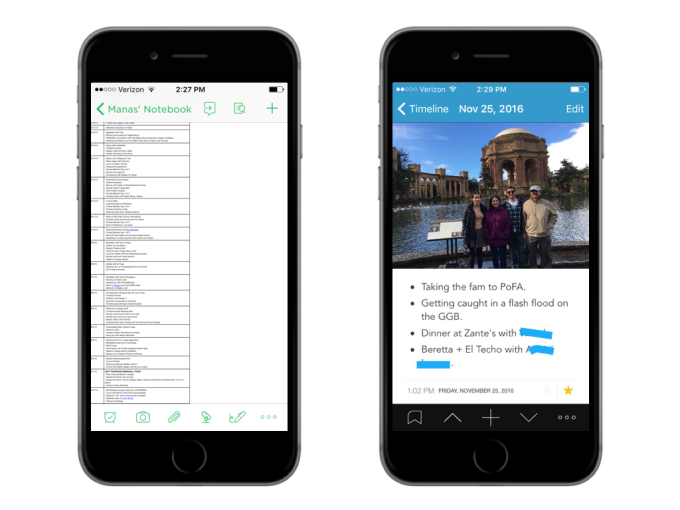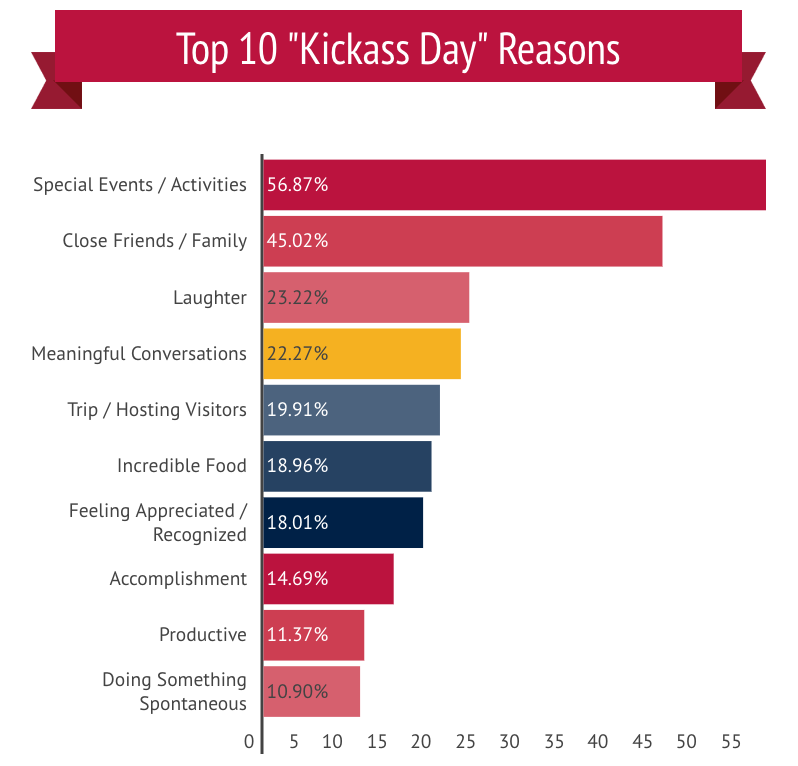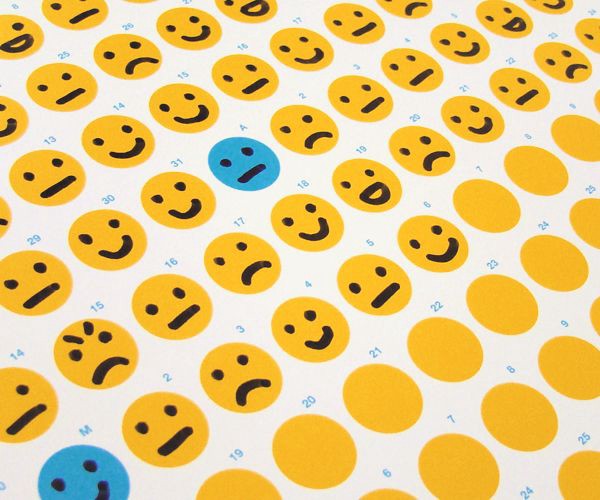by Manas Kulkarni
I analyzed my happiness over 736 days. Here’s what I learned.

“And it only takes a minute, dude. Sometimes I do it when I’m using the bathroom.”
It was December 2014, and I was at dinner in Santa Cruz with one of my best friends. I can’t remember why, but somehow we were on the topic of “routines” and he was telling me about a daily journal he’d been keeping.
“It’s simple — I just write down at least one dope thing that happens every day.”
When he suggested I try it, I was immediately skeptical. I’d always categorized journaling as one of those “it’s-probably-good-for-me-but-realistically-I’m-not-going-to-keep-it-up” ideas (See “flossing”, “meditation”, and “watching only one episode of The Office at a time”).
But after hearing how much he’d genuinely enjoyed doing it — and more importantly, how easy it was to do — I thought I’d give it a shot. I can now proudly say that, after a little more than two years, I haven’t missed a single day.
What I’m more excited to share, however, is what I’ve found by digging into all of the entries. (*Note* I’m a former statistics teacher who had way too much free time in India last month.)
Below are three things I learned from the process and my analysis.
Takeaway #1: It’s actually pretty easy to do
I was initially worried about staying consistent, since my track record for maintaining habits is laughably poor. But taking my friend’s advice, I used free moments in the day to make my daily entries: during my commute, on my way back from the gym, or on the porcelain think tank.
Originally, I kept my entries in an Evernote doc, but eventually the file got too large and slowed my phone down. I switched to Day One, which is a beautiful app for daily journaling that allows you to tag entries, add photos, and even set daily reminders so you don’t forget.

I won’t lie, I’d often miss an entire week’s worth of entries and would have to go back later to make it up, which was a pain. But when I’d forget what had happened on a particular day, I’d just look through texts or emails from that day to jog my memory. Even if the post was something as simple as “that amazing pasta with the spicy meatballs,” I didn’t mind — I just wanted to make sure I was making an entry.
Takeaway #2: You have more good days than you think
Not only was it great to scroll through all of these positive entries on a bad day and think “cool, life is not as terrible as it seems today,” but I also used a feature in Day One to “star” days that I thought were especially fantastic. This allowed me to do two things:
1. I calculated how often I had a “kick-ass” day (a.k.a “starred” entry)
I had 211 “kick-ass” days out of 736 total entries…

So basically I now have two years’ worth of evidence to confidently say “at least two days this week will be pretty dope.” Of course, it’s subjective in that it depends on my definition of a “kick-ass” day (see below), but since I’m predicting for my own life anyways, that bias is less relevant.
b) I could understand why these days were indeed “kick-ass”
I exported all of the entries into a spreadsheet and manually tagged each day — yeah, it was totally exhausting — with the specific reasons why that day was “kick-ass.”
Below are the 10 most common reasons:

And for those of you wondering what counts as a “special activity,” here are a few examples:

Takeaway #3: Journaling is more than just “a good habit”
I mentioned earlier that it’s great to “scroll through happiness” on a rainy day, but I’d already expected that benefit when I started.
What I didn’t expect was an improvement in my memory. By virtue of writing down and rereading details, I could easily answer questions like “hey, what was that restaurant we went to over the summer?” or “There was someone I met recently who knows a lot about X,Y,Z. Who was that again?”
I also didn’t expect my journal to give me prescriptive information. I already knew that “meaningful conversations” and “laughter” make for pretty good days, but it’s great to have concrete data to remind me what I should be doing more of (like calling the family in India or planning more weekend trips).
Many of us already spend hours in spreadsheets for our employers, and some of us meticulously track data on our physical health. Why don’t we do the same for our happiness?
I think that’s the kind of “data driven decision-making” that doesn’t get enough attention.
Conclusion
In retrospect, I think the main reasons why I’ve been able to maintain this habit more sustainably than any other is that it had immediate and visible benefits in a very short period of time and gave me a tangible record of my progress to analyze.
That said, I do want to be clear that the point of journaling was NOT the analysis; it took me 10 hours to dissect all of this data, and had that been the end goal when I started, I never would have done it in the first place. (Though it was definitely fun to make this infographic — thanks, Infogram).
The real motivation was way simpler: just chronicle as many great memories as possible because, frankly, it’ll be great to read them every now and then. And that was true :)
I want to thank you for reading this and would love to hear your feedback, your ideas, and your own findings if you’re doing / will do something similar.
